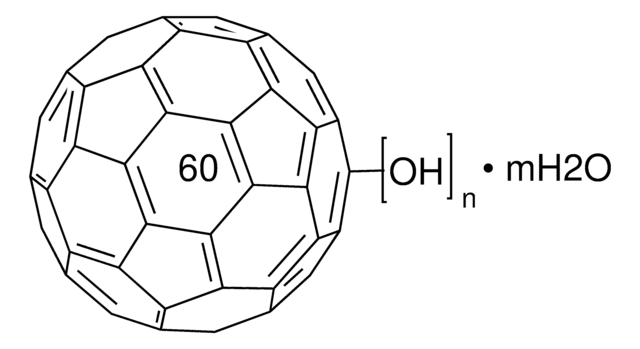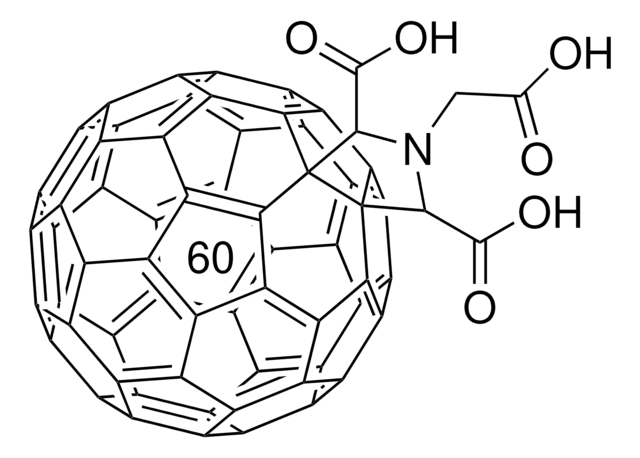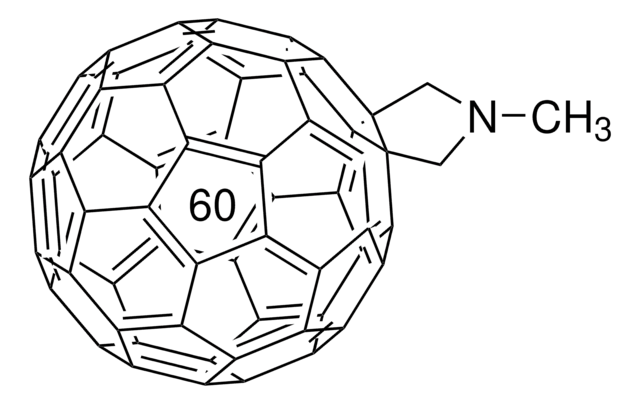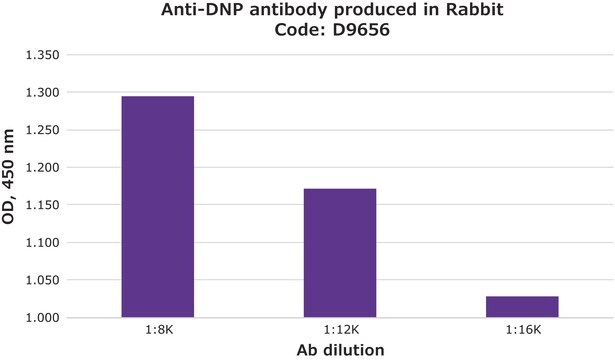709093
C60 Pyrrolidine tris-acid ethyl ester
97% (HPLC)
About This Item
Prodotti consigliati
Livello qualitativo
Saggio
97% (HPLC)
Stato
powder
Punto di fusione
240-245 °C
Solubilità
chlorobenzene: soluble
organic solvents: soluble
toluene: soluble
Stringa SMILE
CCOC(=O)CN1C(C(=O)OCC)C23c4c5c6c7c8c9c(c%10c%11c2c%12c%13c4c%14c%15c5c%16c7c%17c8c%18c%19c9c%10c%20c%21c%11c%12c%22c%23c%13c%14c%24c%25c%15c%16c%26c%17c%27c%18c%28c%19c%20c%29c%21c%22c%30c%23c%24c%31c%25c%26c%27c%32c%28c%29c%30c%31%32)C36C1C(=O)OCC
Categorie correlate
Descrizione generale
Applicazioni
Avvertenze
Warning
Indicazioni di pericolo
Consigli di prudenza
Classi di pericolo
Eye Irrit. 2 - Skin Irrit. 2 - STOT SE 3
Organi bersaglio
Respiratory system
Codice della classe di stoccaggio
11 - Combustible Solids
Classe di pericolosità dell'acqua (WGK)
WGK 3
Punto d’infiammabilità (°F)
Not applicable
Punto d’infiammabilità (°C)
Not applicable
Scegli una delle versioni più recenti:
Possiedi già questo prodotto?
I documenti relativi ai prodotti acquistati recentemente sono disponibili nell’Archivio dei documenti.
I clienti hanno visto anche
Articoli
Find various photovoltaic and bioscience-based applications of fullerenes.
Optoelectronic Devices Based on Diketopyrrolopyrrole (DPP)-containing Conjugated Small Molecules
Il team dei nostri ricercatori vanta grande esperienza in tutte le aree della ricerca quali Life Science, scienza dei materiali, sintesi chimica, cromatografia, discipline analitiche, ecc..
Contatta l'Assistenza Tecnica.





![[6.6] Diphenyl C62 bis(butyric acid methyl ester)(mixture of isomers) 99.5%](/deepweb/assets/sigmaaldrich/product/structures/213/478/93c26667-6556-40bb-8cbe-350bdbabfc00/640/93c26667-6556-40bb-8cbe-350bdbabfc00.png)
![[6,6]-Phenyl C61 butyric acid methyl ester ≥99%](/deepweb/assets/sigmaaldrich/product/structures/359/221/d990c746-0960-4c69-bf76-fe09b193824d/640/d990c746-0960-4c69-bf76-fe09b193824d.png)
![[5,6]-Fullerene-C70 98%](/deepweb/assets/sigmaaldrich/product/structures/316/205/6bbd4872-2192-4042-bd5c-a2b6c4edba43/640/6bbd4872-2192-4042-bd5c-a2b6c4edba43.png)


![[6,6]-Phenyl C71 butyric acid methyl ester 99%](/deepweb/assets/sigmaaldrich/product/structures/716/624/9fb9f2f0-ae99-429f-8d3a-b12267976a4d/640/9fb9f2f0-ae99-429f-8d3a-b12267976a4d.png)